Elite, white New Orleans: Mardi Gras has not freed itself from vestiges of racism
Outsiders come to Mardi Gras in New Orleans and see beads raining down from towering floats, booze spilling into the gutters from “Big Ass” cups, boobs quickly revealed by a lift of the shirt and Black brass bands turning pop songs into funky struts.
But for locals, the Carnival season, which runs from Jan. 6 through Fat Tuesday, is a time for family and friends. Parents hoist kids on seats bolted to the tops of ladders. Some friends meet only once a year out on the parade route, where they share king cake, cold chicken and lukewarm beer, pausing their conversation to holler for trinkets.
Most of these parading organizations, called “krewes,” also hold private balls — ranging from informal parties to debutantes in long white gloves.
The oldest krewes — Comus, Momus, Rex and Proteus — were founded in the 19th century, when New Orleans was a wealthy port and white men controlled the town. Today, New Orleans is a majority-Black city. Most politicians have been Black since Dutch Morial was elected mayor in 1978. But the elite, so-called “old-line” Carnival krewes remain all-male and almost exclusively white.
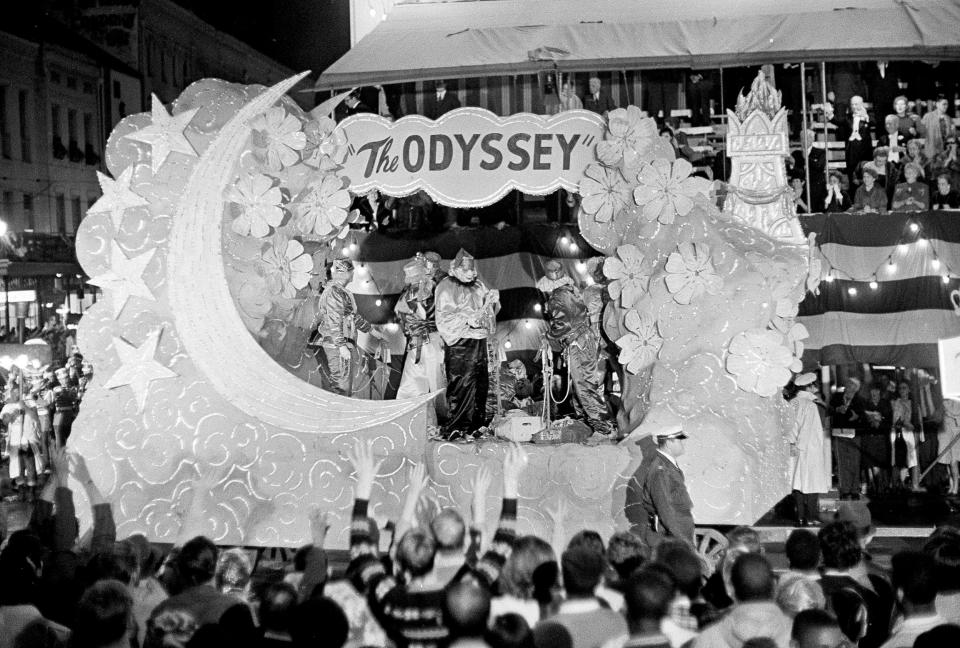
City Council tried to make the krewes diversify in 1991. It passed an antidiscrimination ordinance that required parading krewes to integrate. Rex extended invitations to three Black men. Comus, Momus and Proteus chose to cease parading. Proteus reinstituted its parade in 2000, signing an affidavit that it did not discriminate on the basis of race. Comus and Momus have remained off the streets.
“They kind of took their ball and went home,” said Arthur Hardy, who publishes an annual guide to Mardi Gras.
More: Exceptional Black farmers and their fight to flourish in the South
Despite the removal of Confederate monuments and protests after a police officer killed George Floyd, this mostly white slice of Carnival has not had its contemporary, public reckoning.
“The overall myth is that somehow New Orleans is more racially progressive or laissez-faire than the rest of the South. This is the story that New Orleans loves to tell itself,” said Matt Sakakeeny, an anthropologist and musicologist at Tulane University. “And when you go back into the historical record, it’s just not true.”
A glimpse into the white elite
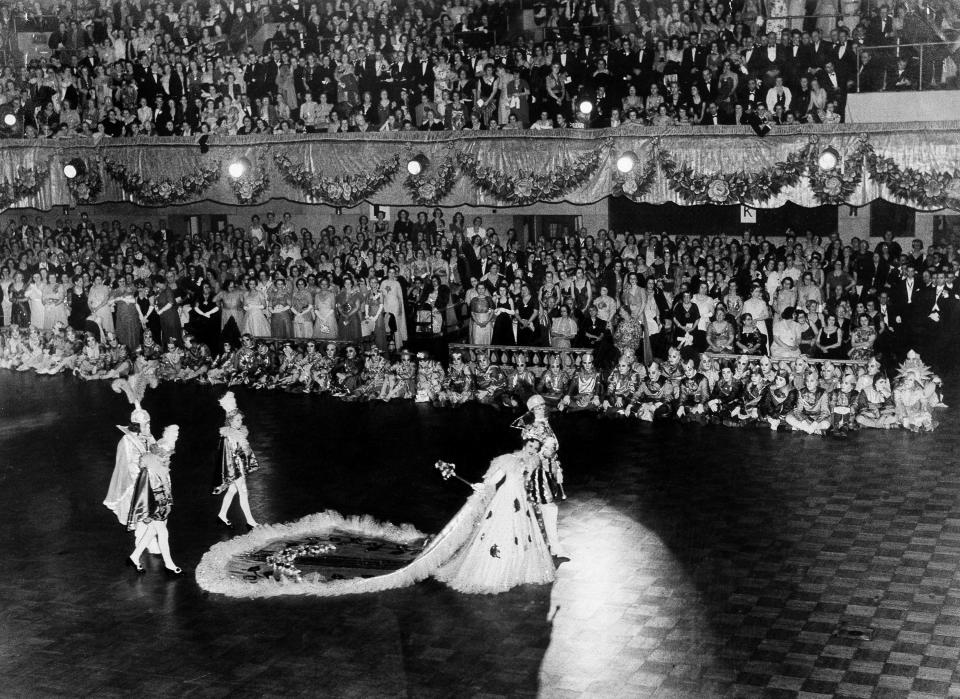
The closest non-elite locals normally get to attending an old-line ball is watching “The Meeting of the Courts” on the local PBS station. The telecast starts with the Rex Ball, where fancy people in formal attire curtsy and bow to that year’s Rex, a distinguished older white citizen dressed in tights and a wig who reigns as the “king of Carnival,” and his queen, a college student. The four-hour broadcast features live play-by-play commentary, bits of trivia, pre-taped features and interviews with past royals. It has all the thrills of an NPR pledge drive.
The event culminates when Rex and his attendants, wearing gold, cross Canal Street to meet Comus and his court in another hotel ballroom, wearing silver.
Rex is named publicly; Comus, never. Comus’ face is hidden by a hard mask that resembles a baby doll with an evil streak. The members are covered tip to tail.
Rex, in its tax forms, says 50,000 people watch the broadcast. The 2022 event has 13,000 views on YouTube.
Some watch earnestly. Mardi Gras historian and costume curator Wayne Phillips typically attends the Rex ball as a guest and then watches the replay after midnight over pizza. He wants to see the historical segments, including those in which he appears.
“I’ve always been honored to be part of the broadcast,” he said. “It’s something the local public television station is very proud to carry.”
For others, it’s a time for snark. They mock the city’s mansion-dwelling class on Twitter with the hashtag #RexComus, filling out a bingo card with squares for a deb with four last names, a clumsy curtsy or an awkward non-explanation from the hosts for why Comus no longer parades.
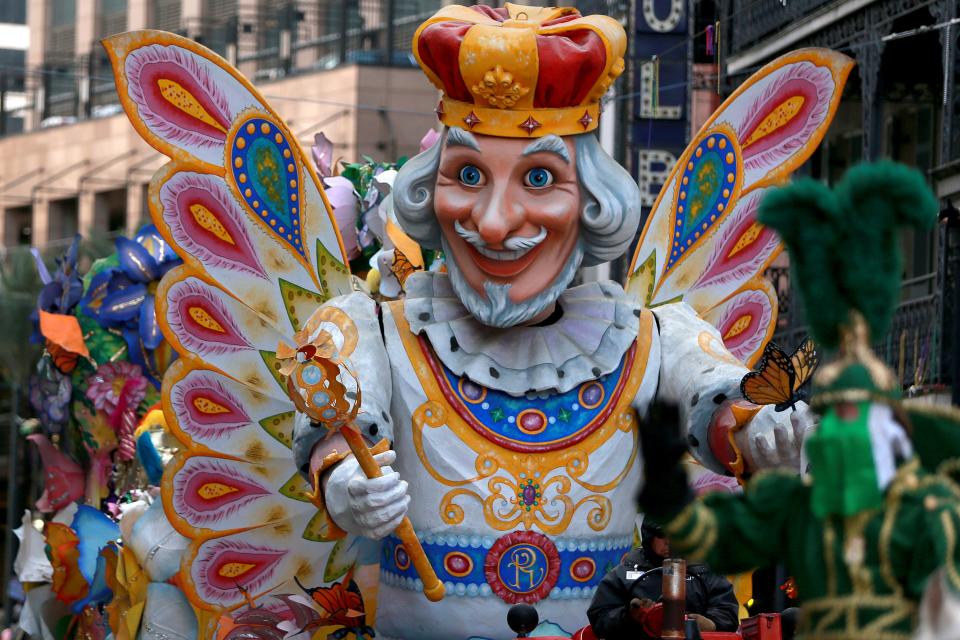
The creation of a tradition
Comus held the first modern Mardi Gras parade in 1857. It created the model that still rules the streets during Carnival: large, rolling floats accompanied by bands and mostly Black torchbearers called flambeaux.
Before Comus, Carnival in New Orleans was a time of chaos, as it had been since it arose in medieval Europe. Carnival gave the poor and powerless a period to mock the rich, letting them play at being elites. Revelers would splatter people with mud and trash.
Comus, led by wealthy white men, aimed to bring order to Carnival in New Orleans. Instead of splashing mud, they tossed trinkets to the crowds. And the elites played elites.
“Comus has done more than its share to bring about this sense of dignity and orderliness which characterizes the Mardi Gras celebration in New Orleans,” boasted the krewe on its centennial.
However, after the Civil War, Comus – joined by Rex and Momus in 1872, and Proteus in 1882 – sought a different kind of order: one where white people reigned supreme.
“It’s not complicated. The origins of Mardi Gras are Confederate, explicitly,” Sakakeeny said.

Reconstruction ushered in a brief era of civil rights victories in the South. In Louisiana, Black politicians held the office of treasurer, lieutenant governor and for 35 days acting governor. Mardi Gras became “the social and cultural wing of the Democratic party,” the party of the Confederacy, Sakakeeny said. Comus’ parades in that era mocked the city’s Republican government, which supported rights for African Americans. One Comus parade notoriously depicted Black people as apes.
The white elites of New Orleans responded to Reconstruction with violence. The local chapter of the White League, a paramilitary group formed to intimidate Black voters, staged a coup in 1874, demanding the resignation of a governor who supported Reconstruction. President Ulysses S. Grant had to send federal troops to retake the State House, City Hall and the arsenal.
The plot to oust the governor was hatched at the Boston Club, a private club closely associated with Rex. The captain of Comus, according to the krewe’s official historian quoted in a 1939 history of Mardi Gras, proudly trumpeted his group’s support for the racist uprising: “It is safe to say that every member … capable of bearing arms participated.”
Though the coup eventually failed, white people retained control.
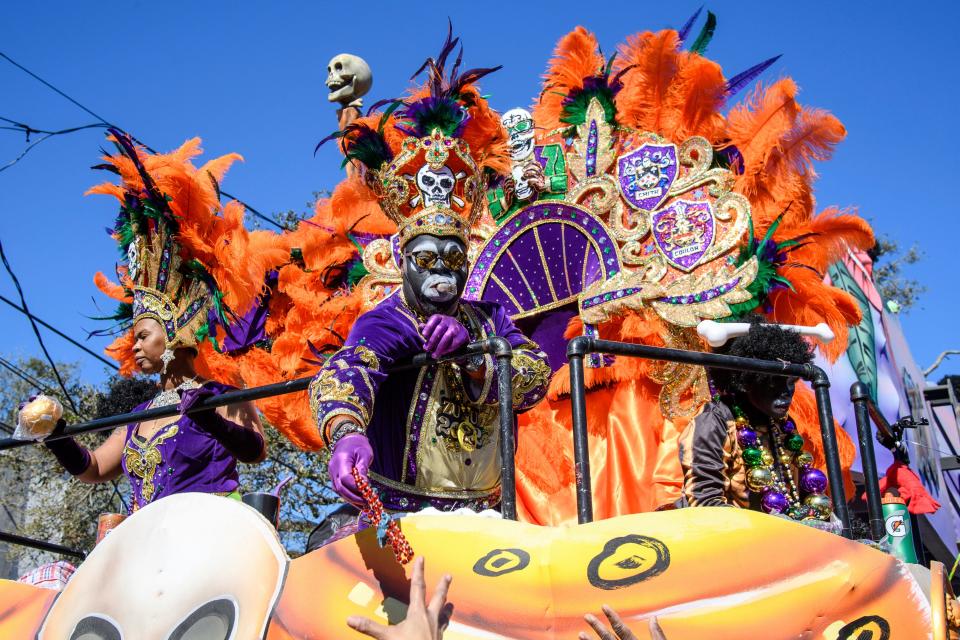
Excluded from power and support, Black New Orleanians created their own Carnival traditions. “Baby Dolls” — women who strut in doll costumes. The Mardi Gras “Indian” tribes, who once fought in the street and now chant and dance in elaborate hand-beaded costumes. Debutante organization the Illinois Club, which held its first ball in 1895, according to its website. And the first Black krewe, Zulu.
Then came the civil rights movement of the 1960s. Many white people fled, leaving Black people in charge of a city with a vastly diminished tax base.
More: A vital piece of Black music history set for rebirth
Dorothy Mae Taylor, the city’s first Black, female councilmember, introduced the Carnival antidiscrimination ordinance in 1991 shortly after the gubernatorial candidate and former klan grand wizard David Duke received 39% of the votes in the state.
Parades rolled on the public streets and used public resources, such as police and sanitation, Taylor argued. They should be open to all the members of the public.
“It's 1991, and it's time for a change,” Taylor told USA TODAY.
It was also a matter of business.
“You had the old-line krewes that were exclusive and didn’t really want to open up their rolls to African Americans, and you had a lack of opportunity for African Americans to participate in some of the deals that were going down in the city, the bigger deals,” said Dow Edwards, lawyer and Big Chief of the Timbuktu Warriors Mardi Gras Indians. “I think that Dorothy Mae Taylor and others thought that by adding some inclusion into those organizations, it would increase the opportunities for the African Americans in the city.”
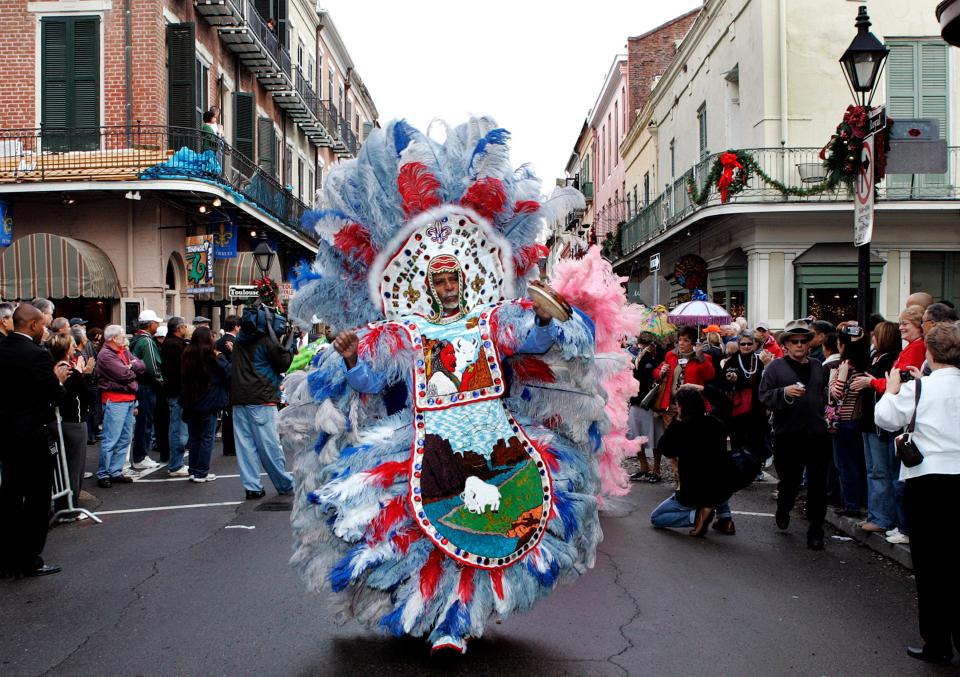
The ordinance passed despite uproar.
Hardy summarized the public opposition in his guide for the 1993 season: It was unwise to tamper with New Orleans’ tourism cash cow. Krewes were integrating on their own. The city had bigger problems. Government shouldn’t interfere with private groups. Those old-line krewes were closed to plenty of white people — they were dynastic, for descendants of the founders.
Comus and Momus withdrew from the 1992 parades, citing a fear of riders being attacked, according to news coverage. Proteus withdrew the season after that.
"I don't think there is any discrimination going on here," Beau Bassich, a member of Proteus and co-chairman of the Mayor's Mardi Gras Committee, told the Atlanta Journal-Constitution at the time. "These are private social organizations. It would be awful to have some society where everyone is equal in everything."
Phillips and Hardy both said the withdrawals were to preserve privacy and not because of racism. Comus, Momus and Proteus had secret membership. The original ordinance would have required krewes to submit their rosters for a race check. One krewe captain told Hardy, “We will not be manipulated by bureaucrats.”
Some people, however, have never bought that argument. “I don’t think they wanted Black people in their club,” Edwards said.
USA TODAY Network emailed representatives of Comus and Momus, as well as five former Comus maids and a queen. None responded.
After legal challenges and a blue-ribbon committee, the city softened the ordinance. Now krewes would simply have to sign affidavits stating they did not discriminate by race. The ordinance remains on the books. However, federal courts ruled that it was not constitutional as applied to the Louisiana Club, which sponsors Momus — or, likely, most private organizations, University of Alabama law professor Ron Krotoszynski said.
Proteus restarted its parade in 2000. Comus and Momus have not, though some members of Momus formed a new parading krewe, the Knights of Chaos, whose membership is secret.
'A representation of the deeper issue'
The old-line groups, whether they parade like Rex or keep their activities largely private like Comus, have shown signs of slowly diversifying their guest list, said Nell Nolan, society columnist for The Times-Picayune, who has covered Carnival since 1979 and has family members with ties to the Rex organization.
Some speculate that the college-age debutantes have insisted on inviting friends who are not white or heterosexual.
“I'm seeing more of it,” Nolan said. “Not a great deal. Because I think there's still that tendency to want to socialize with people who are like yourself.”
Phillips pushed back against the idea that members of Comus or Momus held any racial animus. “There’s no basis for making a judgment about that," he said.
The krewes appear to have never made any public statements defending or denouncing their white supremacist roots, or clarifying their actions in the early 1990s.
It’s “undignified” and “dangerous” for journalists to make assumptions, Phillips said.
But several Black people in community leadership positions felt certain that Comus, Momus and their associated luncheon clubs were still all-white or essentially so. They believed the groups quit parading rather than integrate. And, they said, it matters.
“It is symbolic of something that does require attention … a representation of the deeper issue,” said Flozell Daniels Jr., a Black civic leader in New Orleans. It points to the continuing gap between Black and white New Orleanians’ income, prospects, education and even life expectancy.
Although Comus and Momus keep their members secret, tax records reveal these men run banks, sit on boards and have a hand in nearly every aspect of civic life in New Orleans.
Daniels called them “the shadow government of New Orleans.”
For example, Comus’ 2020 treasurer Andrew B. Wisdom has served on the boards of Tulane University; Louisiana’s largest hospital system; and a foundation that gave more than $3 million to New Orleans organizations in December 2022, according to his work bio and the foundation's website. He was also captain of Momus in 2013, according to tax records.
Plus, elite fancy balls shape the lives of young people. That’s what worried Rhonda Broussard, founder and CEO of Beloved Community, a group that works to create racial and economic equity: The society that is grooming these young people "is holding on to white supremacy,” she said.
It's not a question of a dying legacy, she said. Groups like these are actively continuing that culture.
Brookings analyst Andre Perry, a former New Orleans resident, thinks it’s wrong for the public television station to air a slice of the Comus ball.
“They shouldn’t have an involvement in a club that discriminates,” he said. “At some point, we need to create traditions that value inclusion, not exclusion.”
New Orleans conserves history and tradition, sometimes to a fault, Perry said. And the attitude is contagious.
Perry sat on the board of the public television for several years in the early 2010s. He did not object to the “Meeting of the Courts,” a “cherished event” for the station. He regrets that now.
The station's president and CEO, Robin Cooper, said she was not aware of a board member ever raising concerns about the program.
Proliferating traditions
Some people in the old-line krewes care enormously about them. "Rex has its theme decided years ahead of time. Rex will probably look at the girls coming along and say eight years from now she might be in the court," Nolan said.
However, Carnival has opened up in recent decades. A flourishing of new groups has allowed more people to participate, regardless of their social connections, wealth or race.
There are gaudy parades boasting B-list celebrity guests, krewes for sardonic female professionals, walking groups for admirers of French Pre-Revolutionary fashion and processions put on by sci-fi geeks.
“I still think Mardi Gras was diminished by [Comus’] demise, but very few people think about it or talk about it now,” Hardy said.
The new organizations often bring progressive values about race and inclusion. The Krewe of Red Beans began by celebrating New Orleans’ favorite Monday lunch and became instrumental in supporting the city during the COVID-19 pandemic and Hurricane Ida. It has a “costume code of ethics” that bans blackface, cultural appropriation and disrespecting sex workers.
However, even young krewes have not avoided racist controversies. In the midst of the Black Lives Matter protests in 2020, the founder of the all-female krewe Nyx posted on social media that “all lives matter.” In response, hundreds of members resigned, according to a report from WWL.
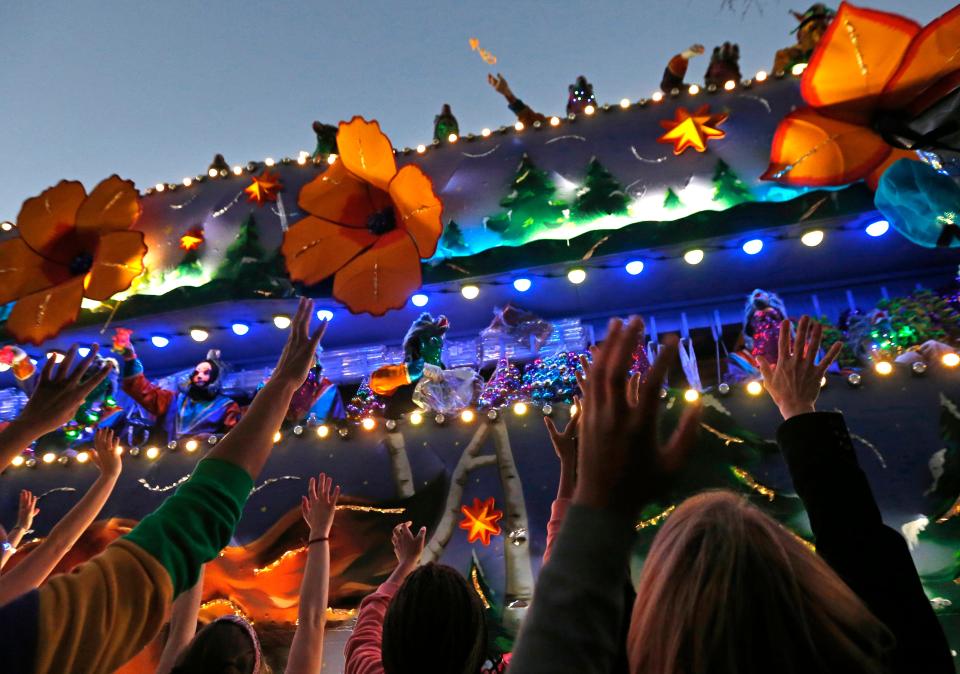
The Krewe of Endymion stunned many New Orleanians this year by choosing as its celebrity guest Mel Gibson, the actor with a long history of antisemitic and misogynistic behavior. After public outcry, the krewe swiftly revoked the invitation.
Still, “the statement they made missed an opportunity to call out antisemitism, to call out misogyny. I certainly wish they had gone several steps father in addressing the root cause of why people were unhappy with the decision,” said Lindsay Friedman, regional director for the Anti-Defamation League.
Hardy, in his fifth decade of publishing his annual guide to the season, thinks that Mardi Gras is better now. “It’s more democratic,” he said.
And yet, the 1991 ordinance that attempted to integrate parades remains a touchy matter.
“A lot of people in this town just duck for cover when you start talking about this, because it’s so aligned with the wrong side of history,” Hardy said.
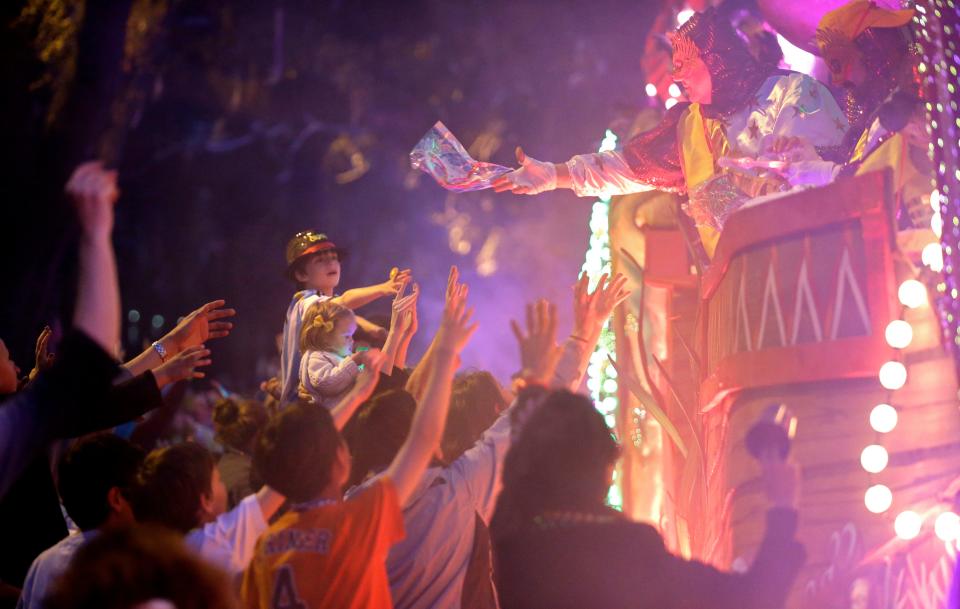
Danielle Dreilinger is an American South storytelling reporter and the author of the book “The Secret History of Home Economics.” You can email her at ddreilinger@gannett.com. Todd Price covers food and culture in the South. You can reach him at taprice@gannett.com.
This article originally appeared on The American South: New Orleans Mardi Gras has not freed itself from vestiges of racism

